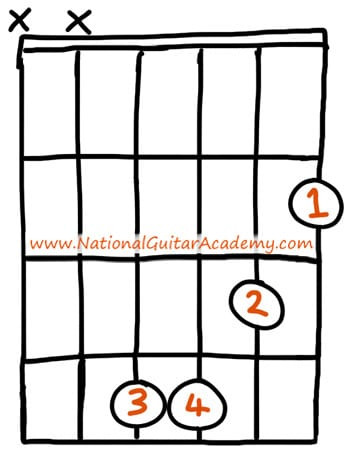For many aspiring guitarists, the Bm guitar chord can feel like a significant hurdle. While open chords might come relatively easily, the B minor chord often presents a unique challenge. You may be familiar with simplified versions using only the top strings, but these can lack the full, rich sound of the complete chord. This is because the Bm chord is often the first foray into the world of bar chords, a technique that unlocks a vast landscape of musical possibilities on the guitar.
The Bm chord was likely the first bar chord that many guitar players, including myself, were compelled to learn. Struggling with this chord is a common experience, but overcoming it is incredibly rewarding. Mastering guitar chords, especially bar chords like Bm, not only expands your chord vocabulary but also surprisingly enhances your lead guitar playing abilities by strengthening your fretting hand and improving finger dexterity.
Why the Bm Chord is Indispensable
The Bm chord is not just another chord to learn; it’s a fundamental building block in numerous popular musical keys. Notably, it plays a crucial role in the keys of G major, D major, and A major. In music theory, B minor is known as the relative minor of D major. This relationship signifies a close harmonic connection, almost like musical siblings. Delving into the notes that constitute each chord reveals this kinship.
The B minor chord is built from three notes: B, D, and F#. Similarly, the D major chord also comprises three notes: D, F#, and A.
 Bm guitar chord diagram showing finger placement on the fretboard for a B minor chord
Bm guitar chord diagram showing finger placement on the fretboard for a B minor chord
As you can see, these two chords share two out of three notes. Furthermore, in any musical key where you find a D major chord, you will almost invariably encounter a B minor chord as well. The prevalence of the Bm chord in popular music makes it an essential chord to master. For many, the inability to play the Bm chord can be a frustrating barrier, hindering their ability to play a wide range of songs. This frustration is often the primary motivator for tackling the challenge of this important chord.
Conquering the Bm Chord: A Step-by-Step Approach
The key to successfully learning any new guitar chord, especially a bar chord like Bm, lies in slow and deliberate practice. When you first approach the Bm chord, resist the urge to rush. Instead, focus on meticulously placing each finger in the correct position. Once your fingers are in place, strum each string individually, from the thickest to the thinnest, and listen carefully to each note. Your goal is to ensure that every note rings out clearly and cleanly.
If you encounter a muted or “dead” string, it usually indicates that you are not applying enough pressure to that string with your fretting finger. Alternatively, you might need to slightly adjust the position of your barring finger, ensuring it’s just behind the fret. Another common cause of muted strings is accidental contact from another finger, dampening the vibration. Buzzing sounds, on the other hand, can also stem from insufficient pressure or incorrect finger placement. While excessive buzzing can sometimes indicate guitar setup issues, focusing on proper fretting technique is crucial.
Experiment to find the most comfortable hand position for playing the Bm chord. While initial attempts may feel awkward, some positions will be inherently less strained than others. Pay attention to the position of your thumb on the back of the guitar neck. Many players find that positioning their thumb roughly in line with their index finger (the barring finger) provides optimal leverage and support for playing bar chords.
In the accompanying image, you’ll notice that the index finger is shown touching the 6th string. While the 6th string note (E) is not part of the Bm chord, a common technique, particularly for bar chords, is to lightly mute the 6th string with the tip of the barring finger. This ensures that if you accidentally strum the 6th string, it won’t clash with the intended chord sound. This muting technique is a slightly more advanced skill but a worthwhile goal to work towards as it enhances the clarity and control of your bar chords.
Overcoming the Bm guitar chord is a significant milestone in your guitar journey. It may require patience and dedicated practice, but the reward is access to a richer musical landscape and a deeper understanding of the guitar. By focusing on slow, deliberate practice and paying attention to the fundamentals of finger placement and pressure, you can master the Bm chord and unlock a world of musical possibilities.
